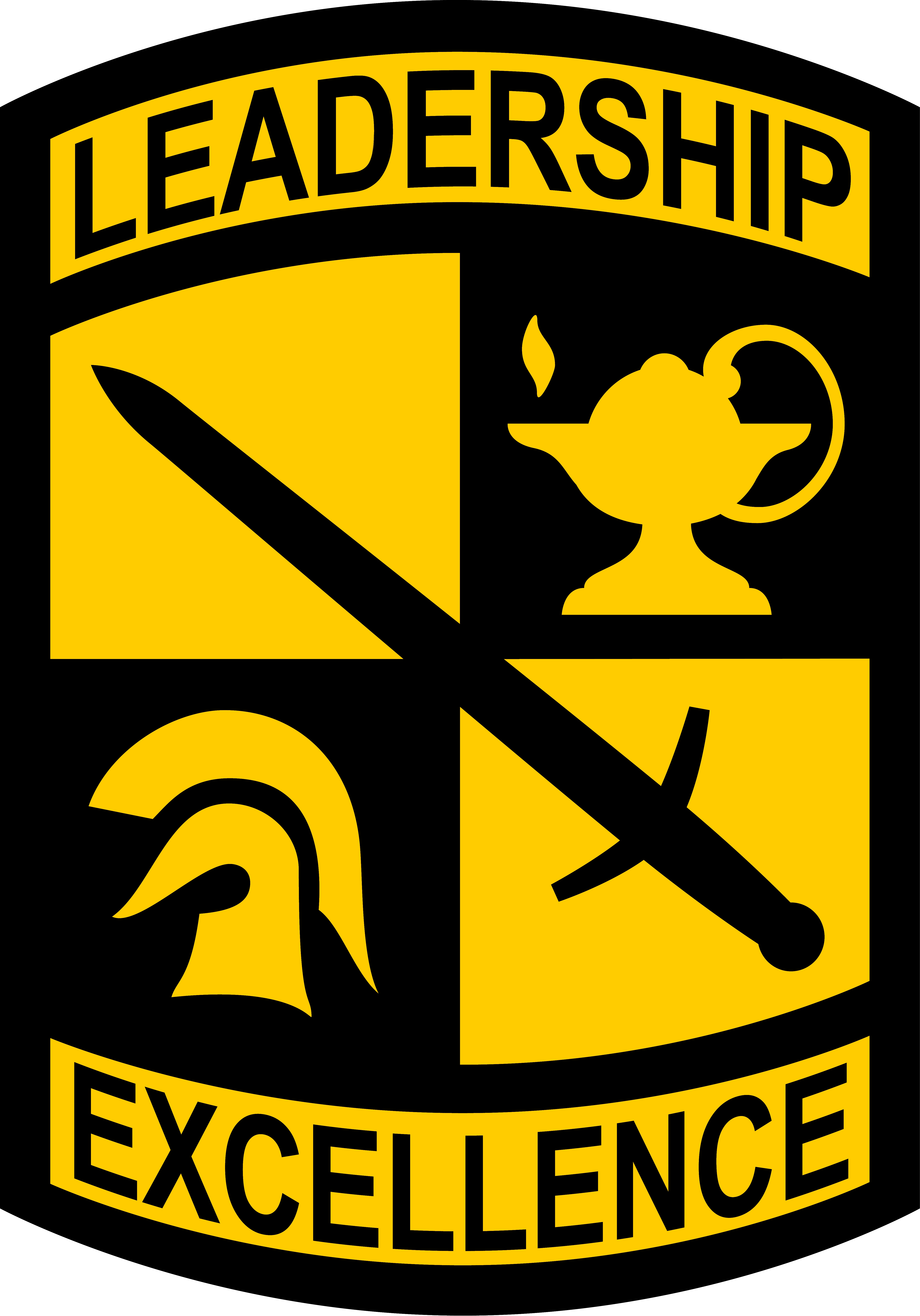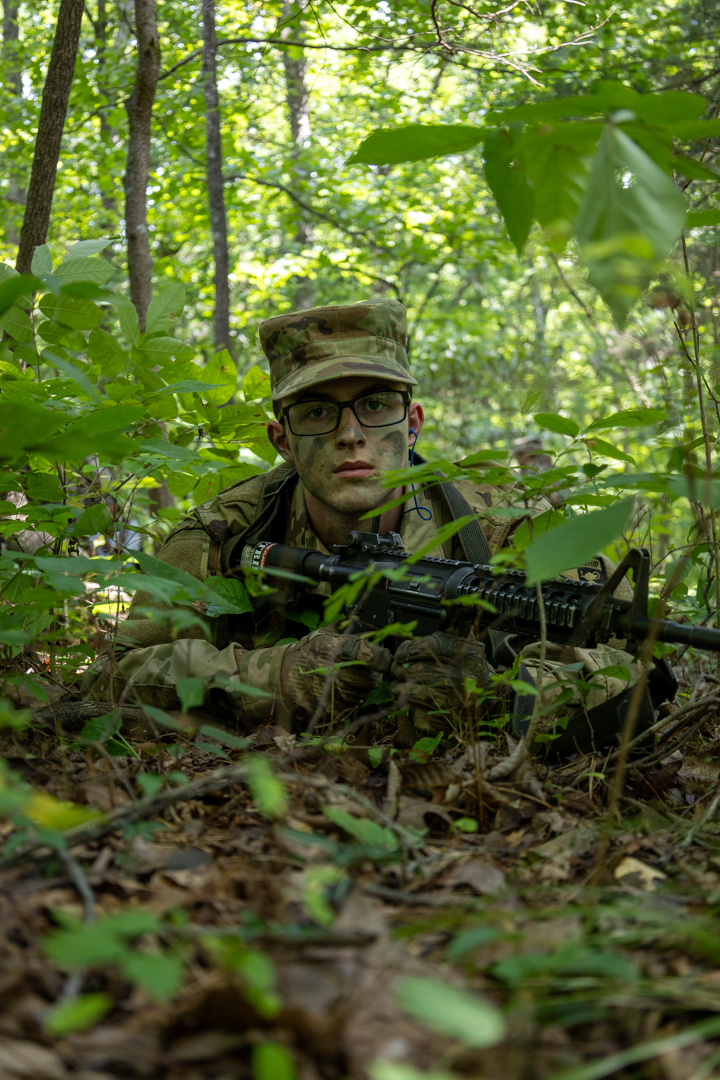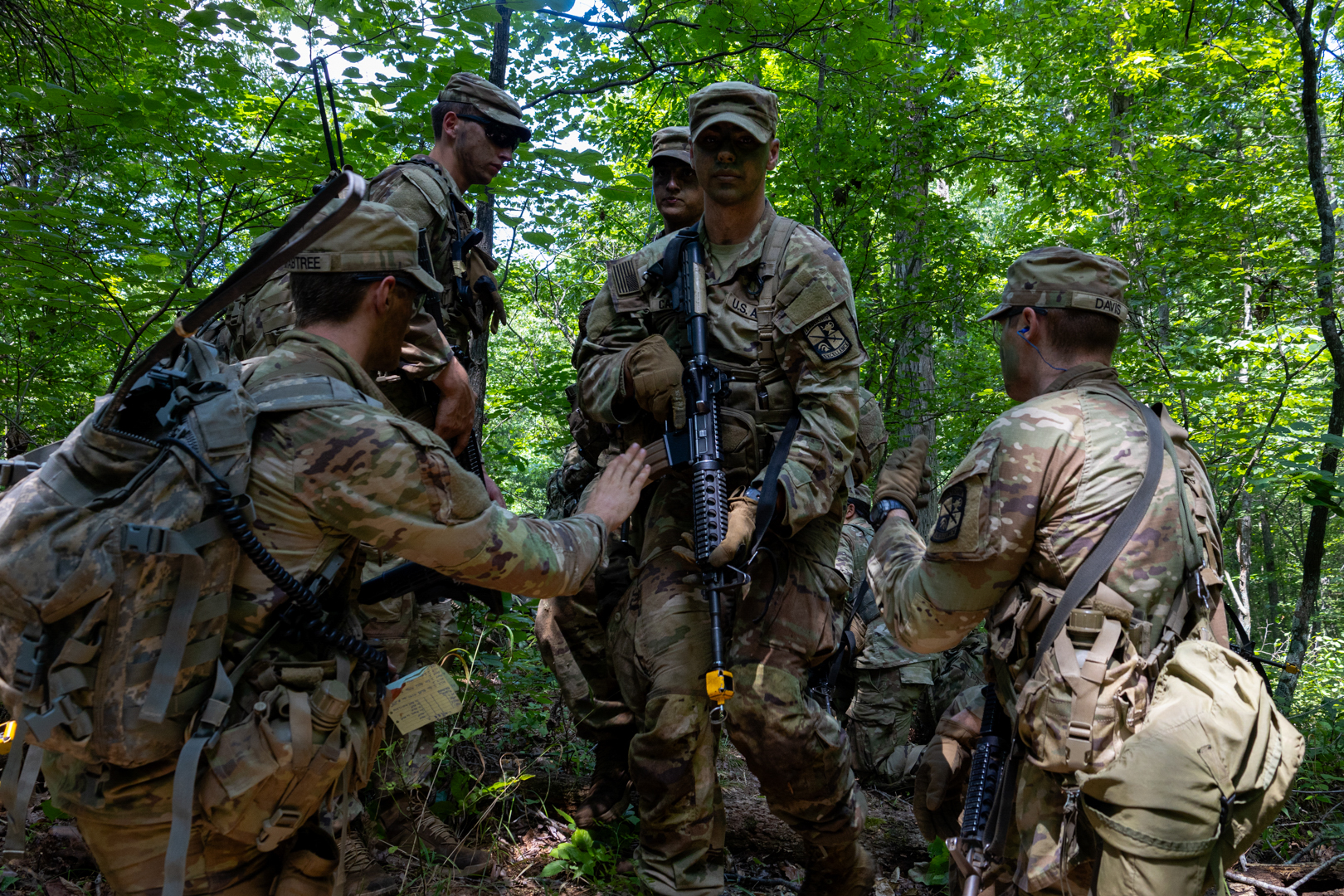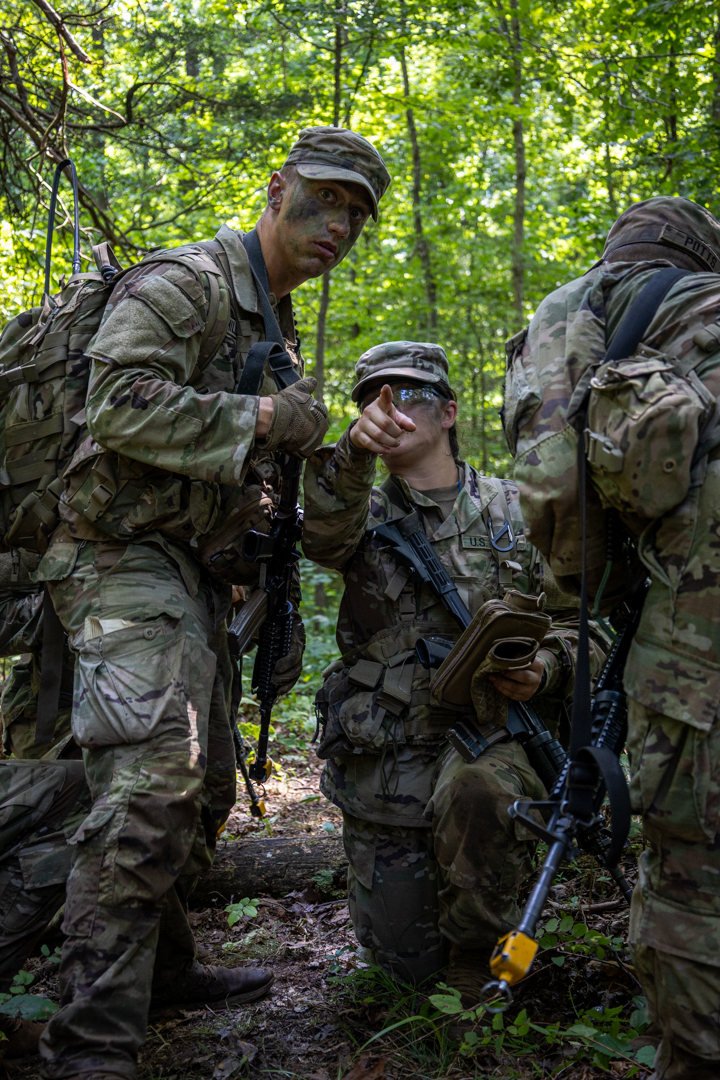FORT KNOX, Ky. – For the first hour of an objective, Cadets from the same platoon sit and strategize with one another following the ⅓ – ⅔ rule and develop a plan of attack to complete their mission. The planning phase is an essential aspect of any successful mission as the Cadets from 7th Regiment, Advanced Camp, discovered during their Panther field training exercise.
Cadets from 7th Regiment began their first day of Panther phase during their field training exercises on Fort Knox, July 21, 2024. Panther phase is the second phase of field training exercise where Cadets are encouraged to take charge and lead their platoon through a successful objective, requiring a lot of planning and cooperation between Cadets.
When planning out their objective, Cadets are encouraged to follow the ⅓ – ⅔ rule. The ⅓ – ⅔ rule means those Cadets in leadership roles, such as Platoon Leader and Platoon Sergeant, should take one-third of their time to complete the mission planning and use the remaining two-thirds to execute the objective.
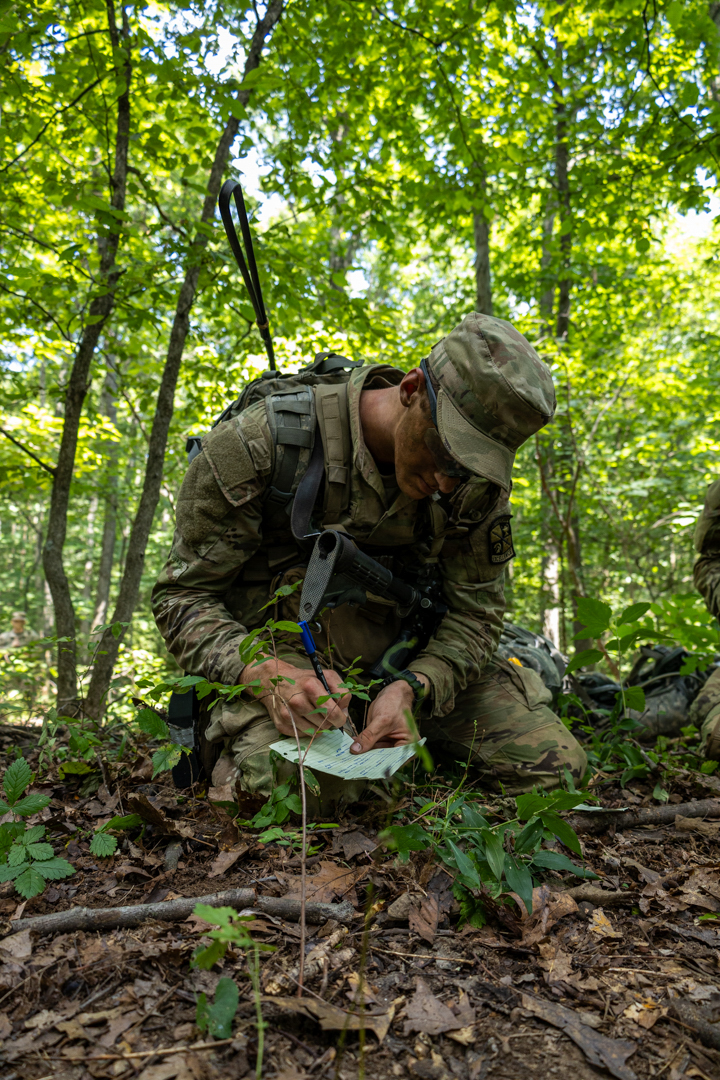
Cadet Jack Crabtree from 7th Regiment, Advanced Camp, acted as Platoon Sergeant his first day of Field Training Exercise Panther on Fort Knox, Ky., July 21, 2024. FTX Panther is training Cadets to lead Soldiers in the field by having them conduct either a raid, ambush, movement to contact, or defense, as well as become familiar with the challenges that come with being in the field for an extensive period. | Audrey Shaw, Florida State University, Cadet Summer Training Public Affairs Office
The Platoon Sergeant for this objective, Cadet Jack Crabtree, University of Akron, Ohio, uses this rule whenever it is his turn to plan how to execute an objective.
“We base our planning on the ⅓ – ⅔ rule, and then we utilize our subordinate leaders to make it happen for us,” said Crabtree.
Every individual role serves a purpose in carrying out the plan. Crabtree described his role as a PSG, “My job was accountability, so keeping track of all the men, weapons, and equipment, making sure everybody’s at the right place, right time, and right uniform.”
With equipment accounted for and people in place, the PSG takes pressure off others who can then execute their leadership roles. Cadet Alvin Wang, from University of Minnesota, was acting as Squad Leader.
“The role of a squad leader is to ensure that the squad is ready to carry out its tasks,” said Wang.
Being in a leadership position, Wang saw firsthand some of the challenges that come with planning. While his squad was waiting to move, it took indirect fire contact on their initial objective rally point, throwing a wrench in their plan. Although Wang was thrown off guard, he and his squad were able to recover.
“The reality is that it is rather difficult sometimes,” says Wang when it comes to adapting to plan changes, “But I will say that as long as you keep thinking straight, you keep focusing on the initial objective and not let everything else affect you.”
Wang says when plans go awry, he stays focused. For the platoon as a whole though, Wang says his fellow leaders and himself created various backup plans.
“There are contingency plans for pretty much every scenario out there. The idea is that if something goes wrong or something unexpected happens, these contingency plans come into effect in order to keep the original plan intact,” said Wang.

Cadet Alvin Wang from 7th Regiment, Advanced Camp, is leading his squad through their objective the first day of Field Training Exercise Panther on Fort Knox, Ky., July 21, 2024. FTX Panther is training Cadets to lead Soldiers in the field by having them conduct either a raid, ambush, movement to contact, or defense, as well as become familiar with the challenges that come with being in the field for an extensive period. | Audrey Shaw, Florida State University, Cadet Summer Training Public Affairs Office
The strategizing Cadets Wang and Crabtree conducted not only helped them to get through their ambush successfully, but also showed them the importance of planning in what they decide to branch. With Crabtree wanting to branch infantry and Wang looking to branch armor, both Cadets found what they learned about planning to be necessary for their future careers.
“We definitely have a lot of experienced Cadre in fields such as infantry and they have a lot of really good insight that kind of helps go into the planning phase as well,” said Crabtree as he reflects on the necessity of preparing for an objective as an infantryman. “You have to have a good solid base of tactics and operation.”
Wang recognizes the necessity of good groundwork for a mission when it comes to his prospective branch as well.
“Armor is overall a branch that focuses a lot more on planning and combined arms,” said Wang. “There will be certain needs from different branches, like let’s say infantry and field artillery, that might conflict with the initial schedule that we, as armor, would have to work around.”
Both Wang and Crabtree’s organizational skills were put to the test during their first day at FTX-Panther. As acting PSG and SL, both were able to lead their squads through a successful ambush, as well as walk away with new insight into the importance of planning in the Army, just as much as execution.
